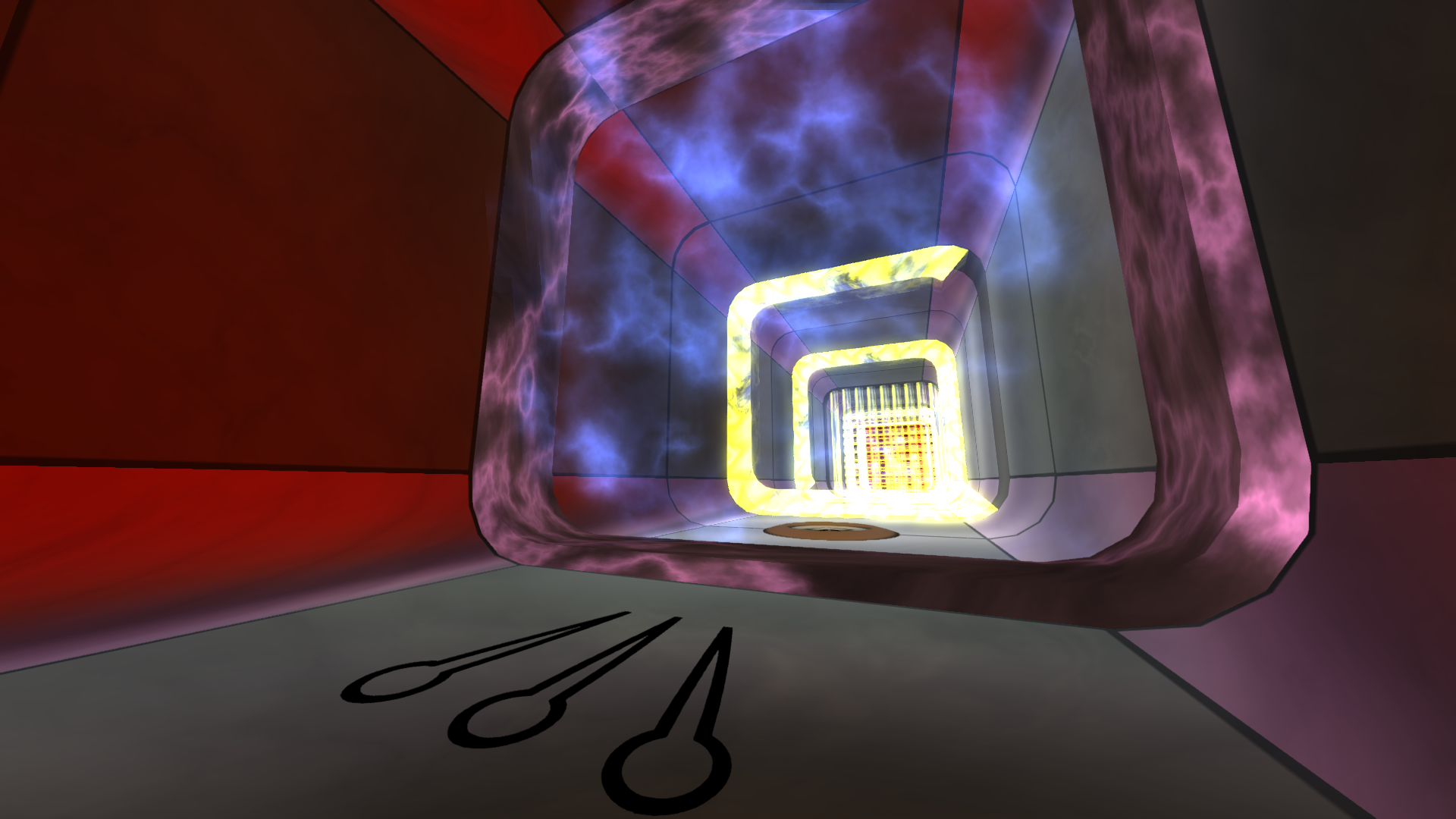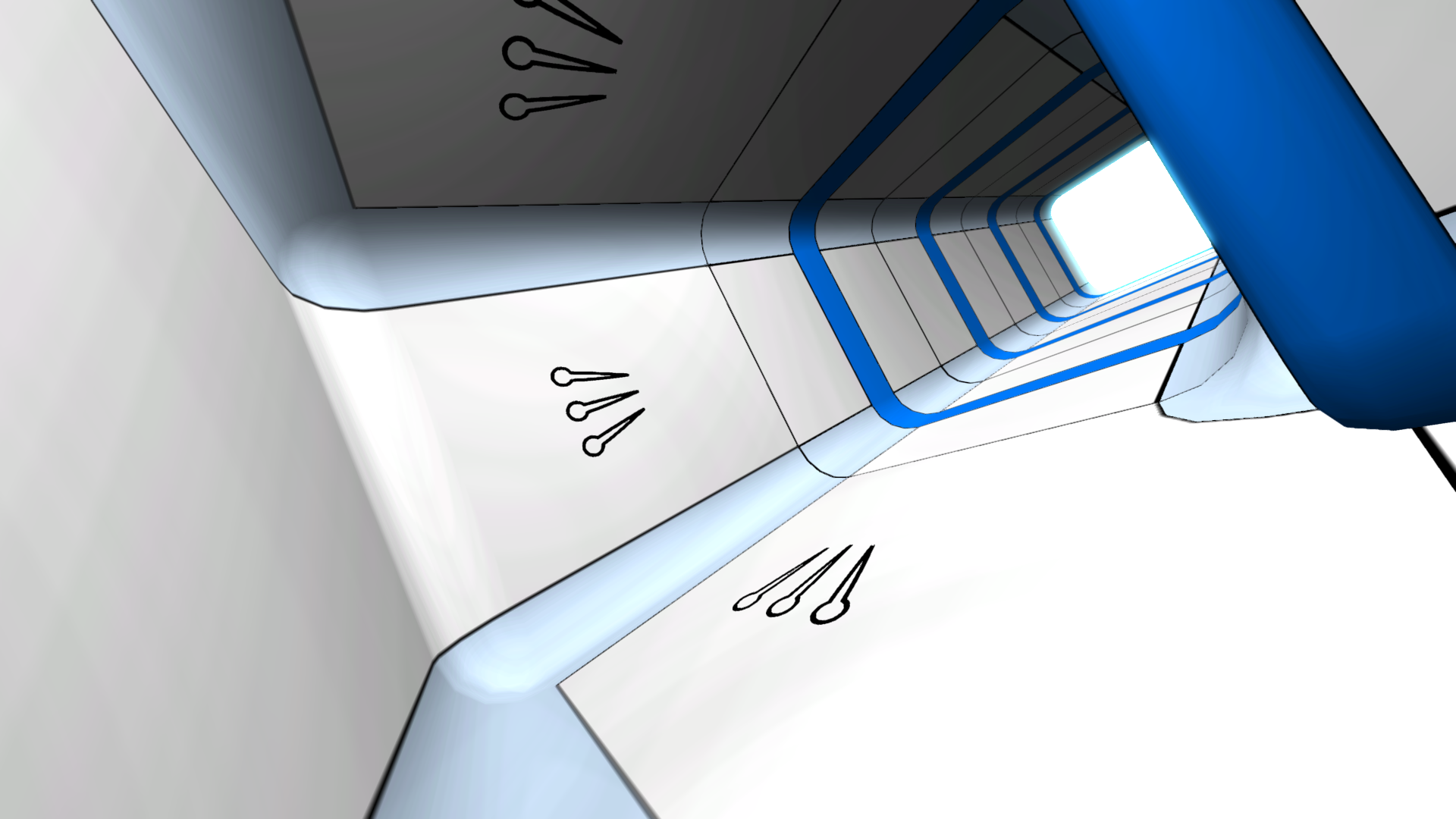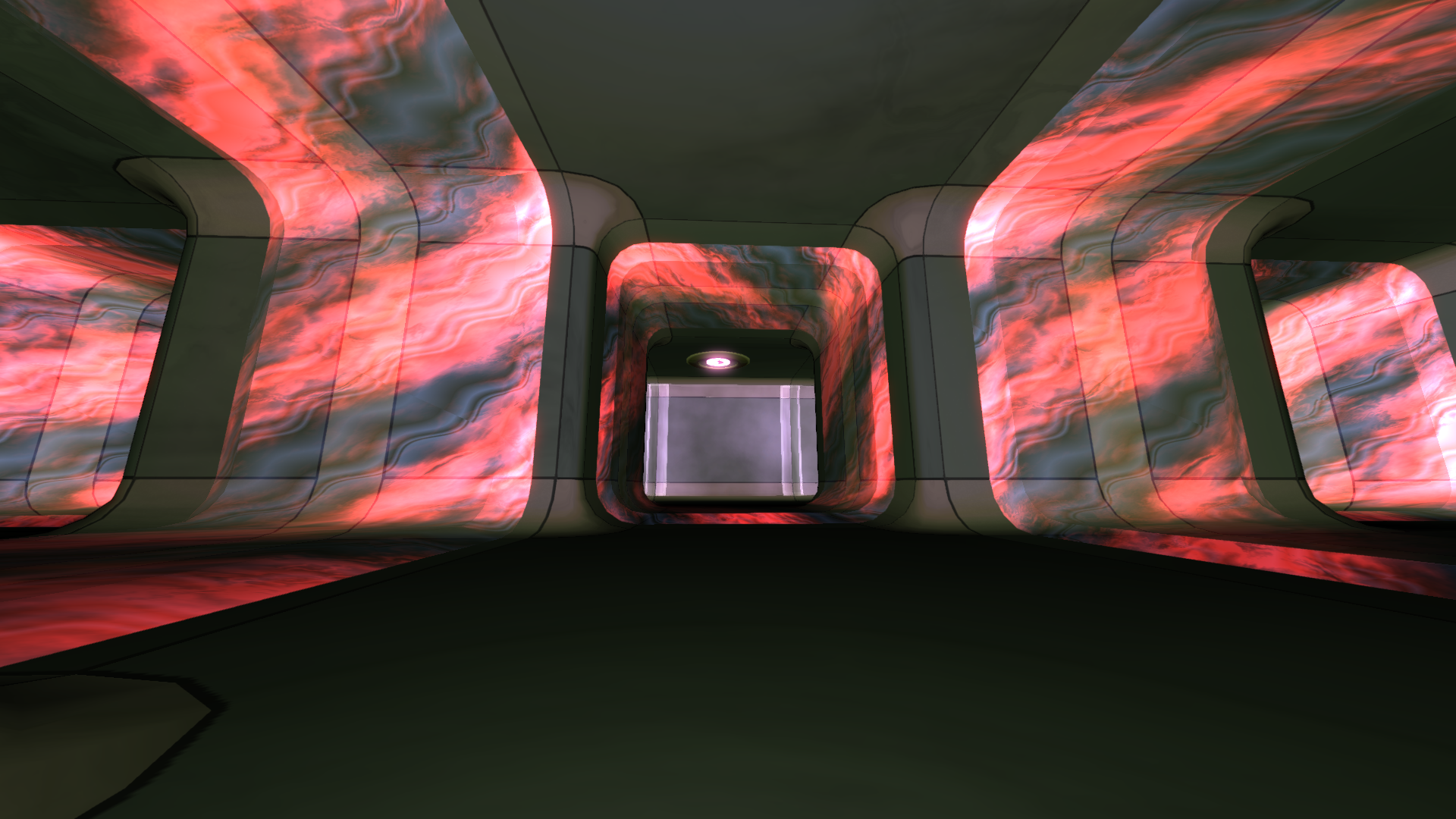 OK all cards on the table. I first encountered this (and met the team behind it) at EGX Rezzed 2014. In this noisy environment I completed the demo, finding all the secrets and winning a signed poster for my trouble. Blastprocess also did a video that appeared on one of their updates for their Kickstarter appeal at the time. Something I backed but was ultimately unsuccessful in funding. So here we are a year and a bit later on with the finished game on Xbox One having already appeared on Steam.
OK all cards on the table. I first encountered this (and met the team behind it) at EGX Rezzed 2014. In this noisy environment I completed the demo, finding all the secrets and winning a signed poster for my trouble. Blastprocess also did a video that appeared on one of their updates for their Kickstarter appeal at the time. Something I backed but was ultimately unsuccessful in funding. So here we are a year and a bit later on with the finished game on Xbox One having already appeared on Steam.
So far so good, so get the ball rolling here’s a one line description so that we all know what the game about; This is a maze inspired puzzle game that utilised the manipulation of gravity in order to progress. And now a bit to explain the ‘ongoing’ narrative since this game has a narrator; As you progress each stage corresponds to the stages of grief as described by Swiss psychiatrist Elisabeth Kübler-Ross in her book, On Death and Dying (1969). Now this isn’t expressly mentioned anywhere but the named thematic level descriptions do correspond (except for of the last one – the time trial menus only list the four). These four stages being; Denial, Anger, Bargaining, and Depression (Acceptance is the last in the book and I’m assuming that it might make a surprise appearance in the game).
To make things a bit more memorable they’re commonly abbreviated to DABDA. Incidentally these stages can, with modification, be applied to any traumatic event where loss is encountered. So definitely not Super Mario level of plotting then unless you view the rescue of Princess Peach as the failure of a revolutionary overthrow by the supressed Bowser by the guardians of the status quo.
Now back to the game; after entering the review code this game weighed in at just over 1GB. The first thing I noticed was that the logo has changed, gaining a futuristic metal rod vibe since we last met. Now I’m going to make a point regarding the front end menu since I distinctly recall having a good old natter about this when I first played the game over a year ago. One of my pet hates are ill thought out menus; especially those where when you’re down to the two option you’re not sure if the text or the highlight is indicating the selection. Well the menus here are simplistic but functional. I did have issue with the fact that the highlight is achieved by making the selected text slightly more bold which in truth really didn’t stand out at all. Also there is limited pad functionality with only the left analogue stick used to change your selection. That brings me to the total lack of any information regarding controls.
Having previously played this I was aware of the game and its core concepts but anyone new is going to have to discover this unaided. Now that may be intentional but a some indication of controls would be useful (or even the option to reconfigure them). Since the original game is mouse/keyboard controlled the Xbox One version takes on the control mechanism of a first person shooter. Left stick general movement and right for view orientation. This is set as default to ‘up’ is ‘up’ and not the flight stick method but can be switched within the options menu – another pet hate is that the option to switch doesn’t specify what you’re switching from. Nothing major I know but irritation nonetheless. That leaves the sole button control that you have, right trigger, that acts as your means of selecting which of the 6 cardinal directions is ‘down’ or later on allows you to pick up boxes. Either action involves placing the target reticule over the box/intended surface and using the trigger. If you’re too far away or that surface is not allowed then the colour of the reticule will change to indicate this.
As already mentioned the game features a series of levels and each breaks down into individual numbered parts. This allows for them to be replayed as they’re completed as time trial events and your standing can be gauged on the associated leaderboardsl. In essence each stage is fundamentally the same in principle; start, negotiate obstacles/puzzles and reach the end/checkpoint. The environment that you pass through is typically composed of regular square shaped tubular sections (with rounded seams) that change direction or branch at different points although as the game progresses more open environments will start to appear. Along the these tunnels various barriers with try to inhibit travel. By reorienting gravity the side that you follow can be changed. So you can choose to go through holes, avoid deadly bits or fall to gain momentum which will also allow you to break through barriers. As you progress further barrier types will appear that require quick movement/gravity selections. As an aide the various barrier types will offer visual clues to their behaviour; so a barrier might have a tiny points of flight on it to indicate an orientation which when approached from will allow you to pass through it.
The use of visual clues is clear and consistent and requires the player to pay attention, of course there are secrets to find in order to provide additional ‘replayability’ alongside the leaderboard times. These secrets however do not utilise clues but instead are typically behind false walls or through sections that you would not usually traverse. Sometimes the secrets will require reworking a puzzle in order to bring a box along to activate a pressure switch. That brings me back to the boxes. Your lone button control is your only means of physical interaction (if you exclude the effect of gravity) and allows you to manipulate boxes. These are dispensed singularly from pads (or found within the levels) and can be used to operate pressure switches. The boxes are not immune to the environment so will be pushed around by moving platforms but they will not follow your lead when you change the gravitational orientation but will instead maintain their own gravitational orientation.
I’d best now mention the music and narrator. I’d recommend rebalancing the sound from the beginning. The music is pleasant and not offensive especially since you’ll be hearing it a lot. But the narration when it occurs can be easily lost as the melody has a habit of building up to a crescendo at the same time. I would also recommend turning on the subtitling since sometimes the narration continues when you think it had ended and you will be on occasion caught out by that. The voice over work is professional and is in keeping with the level names. The secrets when you locate them actually provide additional story beats – if you can call them that. However I feel that the word narration is maybe too strong a word to describe the statements that are being expressed. Glimpses into what might be an ongoing situation/scenario is more probably closer to describing them.
Graphically this a game driven by function. The stages maintain a thematic colour scheme in keeping with their title (the second world, Anger, is red) and the initial areas do come across as being drab as a consequence of this and if you’re not blessed with fairly good special awareness the lack of a horizon will affect your progress. All the elements that you encounter will remain consistent with visual clues as to their effect on the player.
Initially the game is only slightly testing but as the levels go by the difficulty does increase. The puzzles aren’t generally not too difficult in concept once the environmental hazards are understood. In fact once the solution is found to a puzzle the real difficulty is actually doing what is required to progress. This can be an incredibly a fraught experience. On more than one occasion my frustration at negotiating a puzzle led to what I’m calling the Father Jack response; i.e. the yelling of ‘feck’ (or something a little stronger). As I write this review I’m nowhere near the end. I have managed to find many of the secrets as I’ve progressed. And a little warning here that the save function is available at any time in the options menu doesn’t seem to save at any time. Instead for me when I restarted I was at the beginning of the last numbered section.
I’ll keep on playing this in in order to reach the end and being relatively small StandPoint will sit on the harddrive without hitting on the storage capacity. As a puzzle adventure title the game is a challenge but I’m not sure if the narrative and this game style are a suitable mix. Maybe it will all become clear when I reach the end. I can see that you could take the game as a visual metaphor (being as it were all played from your perspective) and kudos for attempting an usual and difficult subject but after a while my concentration is became focused on the task in hand and not on the brief and occasion pieces of narration.
Neil's summary; we have puzzle game with an interesting gameplay mechanic, an overarching story which is certainly different (and you could say is brave). So taking a lead (or should that be the end?) from DABDA I can say that is something that we can all accept.
Standpoint by Unruly Attractions is available on Steam and Xbox One. You can also checkout the latest trailer here.









